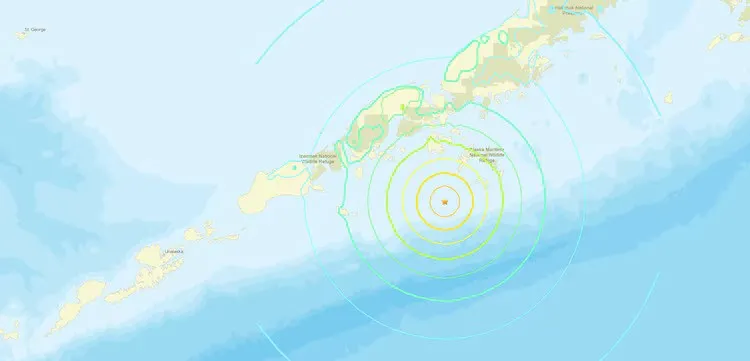Alaska — On Wednesday, July 16, at 12:30 local time, a powerful earthquake with a magnitude of 7.3 struck a remote peninsula in Alaska, causing a wave of concern among local residents and prompting the National Oceanic and Atmospheric Administration (NOAA) to issue a tsunami warning for a significant part of the region. The epicenter, located near Popof Island in the Sand Point area, shook this sparsely populated but geologically active corner of the United States, highlighting Alaska's vulnerability to natural disasters.

According to the United States Geological Survey (USGS), the earthquake occurred at a depth of about 10 kilometers, which amplified its impact on the surface. The tsunami warning covered a wide area — from the southern coast of the Alaska Peninsula to the outskirts of Anchorage, prompting residents in coastal communities to hurriedly evacuate to higher ground. “This is a reminder of how quickly nature can change everything,” said Jacob Rees, a fisherman from Sand Point, who felt his boat sway from the tremors while in the harbor.
Earthquakes of such strength, which Michigan Technological University classifies as capable of causing “serious damage,” are relatively rare — only 10–15 such events are recorded worldwide each year. However, Alaska, located at the boundary of the Pacific Plate, which is part of the so-called Ring of Fire, is the epicenter of seismic activity in the USA. In just the last five years, the region has experienced several significant earthquakes, including a magnitude 7.1 event in 2018, which caused chaos in Anchorage.
Currently, there are no reports of casualties or significant destruction, but officials warn that assessing the damage may take time due to the remoteness of the affected areas. “We are still gathering information from local communities,” said Alaska Governor Mike Dunleavy at a press conference, emphasizing the need for swift coordination between local and federal agencies. According to NOAA officials, the tsunami risk remains, although preliminary data indicates that if waves do occur, they could be less destructive than initially feared.
USGS experts note that earthquakes of magnitude 7.3 can trigger aftershocks that may last days or even weeks, adding uncertainty for local residents. “This is not a one-time event,” explained Dr. Lucy Jones, a seismologist at the California Institute of Technology. “Alaska is in a state of ongoing geological tension, and such earthquakes are part of its natural rhythm.”
For many in Alaska, this quake is not just news but a harsh reminder of the fragility of life in a region where the beauty of nature is intertwined with its unpredictable power. As communities prepare for possible aftershocks and assess the consequences, the world watches to see whether the region can avoid the worst-case scenario.


